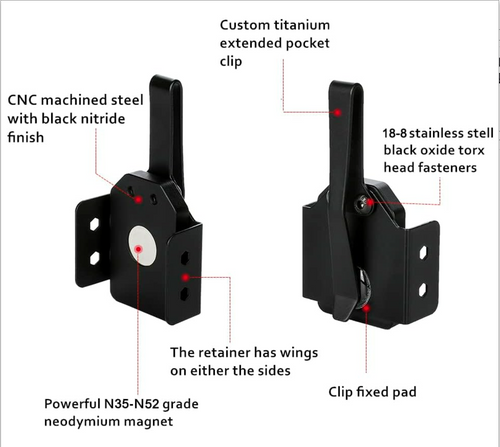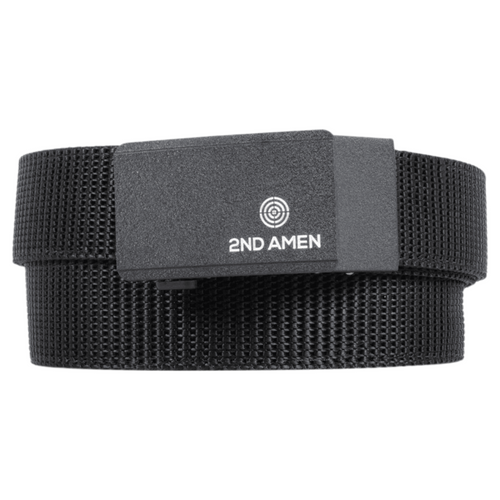The Real Difference Between IWB and OWB Holsters
When it comes to everyday concealed carry, one of the most common questions is about the difference between IWB and OWB holsters. Each style has its strengths, and choosing the right one can impact your comfort, concealment, and draw speed. Let’s break it down so you can make the best choice for your carry style.
What Is an IWB Holster?
IWB stands for “inside the waistband.” This type of holster sits between your body and the waistband of your pants. The gun is tucked close to your body, allowing for maximum concealment. If you’re trying to avoid printing or want to be as discreet as possible, this option excels.
IWB holsters are ideal for people who prioritize concealment over comfort. Because they rest inside the pants, they may feel tighter or more restrictive—especially when sitting. That’s why choosing a high-quality holster is essential.
What Is an OWB Holster?
OWB stands for “outside the waistband.” As the name suggests, this holster is worn on the outside of your pants and is usually attached to a belt. OWB holsters offer easier access to your firearm and are generally more comfortable for extended wear.
However, OWB holsters can be harder to conceal. You’ll need a jacket, hoodie, or untucked shirt to keep your firearm hidden. That said, if you value comfort or plan to open carry occasionally, OWB might be a solid option.
Key Differences Between IWB and OWB Holsters
- Concealment: IWB holsters offer better concealment by sitting inside your waistband. OWB holsters are more exposed and need extra layers for concealment.
- Comfort: OWB holsters are typically more comfortable, especially for all-day carry. IWB holsters can dig into your waist if poorly designed.
- Accessibility: OWB holsters usually provide a faster draw, but high-quality IWB models can be just as fast when properly worn.
- Retention: Both styles can offer excellent retention with proper design and materials.
- Style & Fit: Some users prefer IWB for smaller firearms like the Glock 43X. Others choose OWB for full-sized pistols when concealment isn’t as critical.
These factors matter when deciding what’s right for your carry style. To dive deeper into carry positions and setups, check out Glock Holster Concealed Carry.
Why Holster Quality Matters
No matter which style you choose, the quality of your holster directly affects your safety and comfort. A bad holster can slow your draw, jab into your side, or even allow your firearm to shift or fall. That's where Houdini Holsters delivers.
Houdini Holsters IWB Options
Breakout 1.0 IWB Holster: This holster is crafted for those who want total concealment with everyday comfort. It features adjustable retention, a secure Kydex clip, and slim construction to reduce printing. It’s an ideal choice for Glock 43X or Glock 19 owners who want a simple and reliable holster.
Breakout 2.0 IWB Holster: For those who want an edge in draw speed and comfort, this upgraded version is the ultimate pick. It reduces the delay in a traditional draw stroke and molds perfectly to your body for long-term wear. It’s especially great for experienced carriers who value performance.
If you carry a Glock 43X, this post will also help you decide: The Best Glock 43X Holster.
Houdini Holsters OWB Option
Breakout 1.0 OWB Holster: Designed for exceptional comfort and concealment, this OWB holster fits snugly against the body. Its ergonomic cut allows for fluid movement throughout your day, and it conceals well with the right outerwear. It’s perfect for those who prefer OWB but still want a discreet setup.
You can learn more about how to carry effectively with OWB in our Top 5 Concealed Carry Mistakes.
Which Holster Type Should You Choose?
Your lifestyle, body type, and carry preferences will determine the best choice. If you’re frequently on the move and need discretion, go with IWB. If you value comfort and accessibility or often wear outer layers, OWB might suit you better.
Still deciding between firearm types? We’ve broken that down in Revolvers vs Semi-Autos for Concealed Carry.
Don’t Overlook Training and Setup
Holster selection is only part of the equation. You should always train with your holster and firearm combination to ensure muscle memory and smooth deployment. We also recommend carrying with one in the chamber if you’re properly trained—more on that in Can You Carry With Just One in the Chamber?.
If you’re a beginner, check out What Is the Best Handgun for Beginners and Guns for Concealed Carry for guidance.
FAQ: Difference Between IWB and OWB Holsters
What is the main difference between IWB and OWB holsters? IWB holsters go inside your waistband and offer better concealment. OWB holsters go outside your waistband and are generally more comfortable and faster to draw from.
Is IWB or OWB better for concealed carry? IWB is typically better for deep concealment, especially in warmer weather. OWB can be concealed with proper clothing but may require more coverage.
Are OWB holsters good for beginners? Yes. OWB holsters offer easier access and are often more comfortable for new carriers.
Which holster style is more secure? Both can be secure when made with quality materials and proper retention features. Houdini Holsters ensures security across all models.
Can I carry a Glock 43X with either holster type? Absolutely. The Glock 43X is compatible with both IWB and OWB options offered by Houdini Holsters. See The Best Glock 43X Concealed Carry Holster for more details.
Get the Right Holster for Your Carry Style
Whether you prefer inside or outside the waistband, you need a holster that fits your firearm, your lifestyle, and your daily routine. Houdini Holsters offers expertly designed options that give you confidence, comfort, and rapid access.
Choose your holster today and carry smarter.




